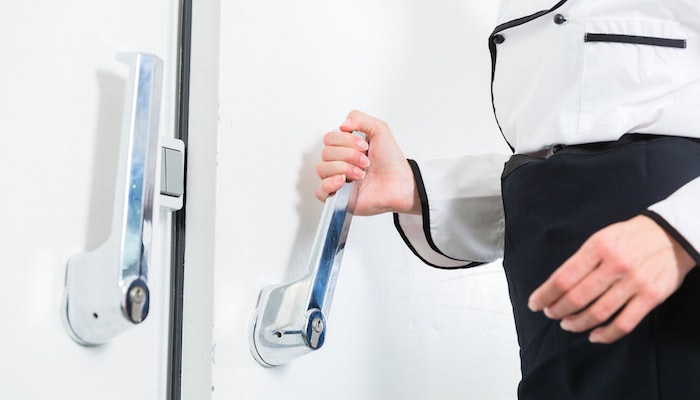 Some industry experts estimate that an average restaurant spends about 30% of their budget on ingredients, so storing them for maximum freshness and shelf life is a priority for any kitchen. However, merely stacking ingredients in a walk-in cooler—or, worse, wedging them into tight spots in an overtaxed cooler—isn’t enough to preserve quality or protect your pizzeria or restaurant’s significant investment.
Some industry experts estimate that an average restaurant spends about 30% of their budget on ingredients, so storing them for maximum freshness and shelf life is a priority for any kitchen. However, merely stacking ingredients in a walk-in cooler—or, worse, wedging them into tight spots in an overtaxed cooler—isn’t enough to preserve quality or protect your pizzeria or restaurant’s significant investment.
Organizing your walk-in cooler or commercial freezer is the best way to ensure you use space wisely and store your ingredients properly. Develop some simple guidelines using these tips:
No food on the floor
When walk-in cooler space is at a premium, it’s tempting to use floor space for stacking certain items. Not only is this a health code violation, some dry ingredients invite pest infestation or otherwise jeopardize food safety. To keep this rule top of mind with team members, you may consider posting a friendly reminder on the cooler door.
Go low with raw meat
Store raw meats on the lowest shelves of your cooler, with a minimum of six inches between the shelves and the floor. This prohibits potential dripping liquids from falling into and contaminating other ingredients. However, cooked and cured meats — like the popular pizza toppings of sausage, pepperoni and Canadian bacon — do not put other ingredients at risk, and may be stored on higher, more easily accessible shelves.
Keep produce away from fans
Fruits and vegetables are delicate and more susceptible to contamination, rot or freezer burn if fans blow directly on them. Store produce out of the direct path of cooler fans to ensure it is preserved.
Give dough balls room to breathe
Airflow is essential for proofing dough balls, as is time. Allow for three inches of space between each dough ball for proper cooling and rising, and a refrigerated spot where the tray can sit undisturbed for 24 to 72 hours. One of the best ways to accomplish this is to use a baker’s rack to make sure the dough ball trays are evenly exposed to proper air flow. Dough boxes are an option; however, when the totes are stacked and refrigerated, the top layer of dough balls are generally well proofed, but bottom layers remain practically frozen due to poor air circulation. To make the process even more efficient, make sure everyone knows which day the dough balls were set out to proof by including this information on hang tags or writing it in permanent marker across the plastic film overlaid on the dough.
Practice first-in, first-out
When stocking shelves or doing inventory, place newer ingredients towards the back of the shelf and older ones at the front. That way, you’ll use those closer to expiration first and won’t waste ingredients. Consider orienting packaging so expiration dates are facing outward or clearly marking each package with the date—a visible standard to adhere to.
Use labels
Remove any doubt about the ingredient type, expiration dates and possible allergens by implementing a labeling protocol that your team can see and understand at a glance. By labeling everything in your walk-in cooler, you’ll avoid mistakes that could endanger patrons or lead to unnecessary food waste.
In addition to keeping food costs in check, these handy best practices for walk-in cooler organization can also drive up productivity. Simply put, kitchen team members spend less time searching for, inventorying or cleaning out spoiled ingredients and more time on the line. You’ll ultimately have a happier staff, consistently serve up quality food and, as a result, pocket higher profits.
For more operational and kitchen efficiency tips, check out our guide below.






